By Eric Vandenbroeck
For some time it has been known that Chinese records provide a
considerable amount of information on Daqin Daqin 大秦 i. e. Great Qin (synonym of Roman Empire in Chinese records). Nevertheless, the
interpretation of these accounts requires a more coherent nexus.
Looking at the
potential relationships between ancient Greece Rome and second-century China it
has been established that the influx of many people from the Near East and
areas that were part of the Silk
Road. Already mentioned by contemporary Greek historian Herodotus where
the Tocharians (modern Xinjiang) whose
languages are the easternmost group of Indo-European languages. Caucasoid
mummies have been found in various locations in the Tarim Basin such
as Loulan, the Xiaohe Tomb
complex, and Qäwrighul. "Tocharian"
was given to them by modern scholars, who identified their speakers with a
people who inhabited the important area of Bactria from the
2nd century BC, and
were known in ancient Greek sources as the Tókharoi (Latin Tochari). This subject of the relationship between China Ancient
Greece and Rome has during the past few years been intensively studied by
specialized historians like for example also Randolph B. Ford who recently
completed a book soon to be published by Cambridge University Press:
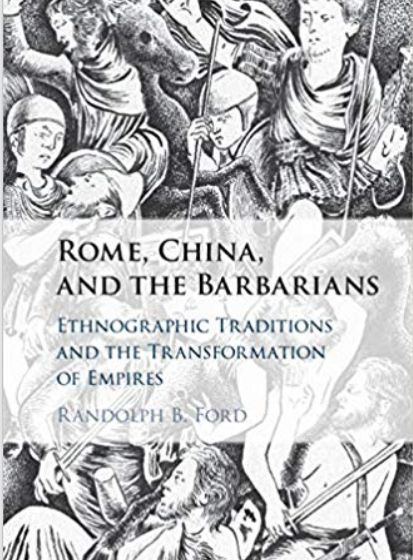
The historical reconstruction
of the trans-Eurasian ‘Silk Roads’ has been the archaeological documentation
coupled with the comparative analysis of the written sources,
that is to say, those of the Roman and the Chinese authors. It has been
argued that from a historiographical perspective, it must be stressed that ‘the
invention of the Silk Roads’ was from the very beginning deeply associated with the History of the Roman Empire.
The Silk roads to the
Mediterranean combined maritime and overland itineraries. From the production
centers in the territories of North-Western China, the caravans moved westward
through the overland roads of the Tarim basin. From the Pamir Mountains, silk
passed through Bactria, avoiding Parthia, and then down the Hindu Valley to the
Northern India ports. The Periplus testifies the existence of silk and silk
products in the Indian ports of the Western and Eastern coasts of India.
From Muziris different routes could be
taken: the most direct was crossing the Indian Ocean to reach the Egyptian
ports on the Red Sea, then across the desert up to Alexandria. Another possible
route was leading carriers to the port of Charax Spasinou on the Persian Gulf, and then across the
desert to Palmyra. From this important city (a key hub for the caravan trade),
the silk was then taken to the Syrian cities of Tyre,
Sidon, Antiochia, famous centers for textile
manufacturing.
Indian merchants
provided Roman business people with some necessary
information about the location of China. Roman seafarers used the stars to
determine the position of distant countries and plot the direction of sea
crossings. Night journeys across featureless desert landscapes were also made
using the constellations as a guide.¹ Greek
pilots, therefore, tried to connect Indian information on China with star
patterns that might reveal the global position of this distant country. The
Periplus of the Erythraean Sea suggests that ‘Thinalies right
under Ursa Minor and must be on the same level as the outer parts of the Pontus
(Black Sea) and the Caspian’ (AD 50).² Based
on this perspective, China was thought to be on the same latitude as the
Caspian Sea in a location just slightly north of its correct position.
A Concise History of the Roman Contact with China
As ocean commerce
developed, Roman ships began sailing around the southern tip of India to reach
city-ports in the Ganges and Burma. But these Roman voyages remained within the
Indian Ocean since the 1,000-mile-long Malay Peninsula was a significant barrier
that hindered ventures further east. Roman ships were dependent on seasonal
weather. Once the northeast monsoon began to blow in November, it was time for
them to sail back across the ocean to Egypt. ³ This timeframe discouraged any
Roman voyages around the Malay Peninsula to investigate the lands that lay
beyond.
In the early second
century AD, a Greek sailor named Alexandros gathered details from Indian
merchants who sailed to a site on the northern part of the Malay Peninsula
called Tamala. From Tamala, travelers trekked 100 miles across the narrow Kra Isthmus and boarded other Indian vessels on the
eastern seaboard. These ships were outfitted to cross the Gulf of Thailand, and
their Indian crews sailed to Cambodia and Vietnam in search of new trade
opportunities. When they reached the southern tip of Vietnam some of these
ships sailed south into the open sea and made the crossing to Borneo.⁴ Ancient Borneo was an extensive jungle forested
island that was almost as large as Asia Minor (modern Turkey).
Indian ships making landfall on the 700-mile-long northern coast of Borneo were
therefore unsure if the landmass was an island or some southern extension of
the Asian continent.
The Periplus written
by Alexandros has not survived, but it provided Claudius Ptolemy with most of
the geographical data he used to map the southeast edge of Asia. Using this
information, Ptolemy locates ‘Sinae’ (Han China) in a narrow band of territory on
the very edge of the Asian continent. However, Ptolemy made errors in his
reconstruction of the Far East. He theorized that the northern coast of Borneo
was part of the Asian continent and therefore made the seaboard of Sinae extend
southeast to enclose the entire southern ocean.⁵
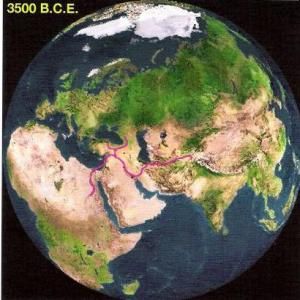

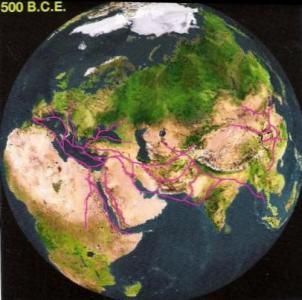
The Maes Titianus Expedition
For centuries the
overland Silk Routes around the Tarim Basin provided a conduit through which
Chinese goods reached Bactria, India, and Parthia. Only one Roman merchant
group is reported to have ventured into Central Asia and followed the Tarim
routes to the Chinese Empire. The group was sent by a Roman entrepreneur named
Maes Titianus sometime around AD 100. But this contact was exceptional and was
only made possible due to particular circumstances
that arose between the leading ancient empires.
In the late first
century AD, the Han general Ban Chao restored Chinese authority over the Tarim
kingdoms using a combination of diplomacy and military force (AD 74–97). By AD
84, Ban Chao had secured Kashgar, and the Han
could re-establish direct political contacts with the Yuezhi in Bactria (the
Kushan Empire). Chinese rule created stability on the silk routes and prevented
intervening regimes from hindering travel, or
monopolizing various sections of the caravan trails that led across the Tarim
territories. In AD 87 the Parthians responded to these developments by sending
an embassy to China which was received by the Han Emperor Zhang.⁶
They returned with
oriental merchandise and brought new information about the Chinese Empire back
to the Parthian capitals at Ecbatana in Iran and Ctesiphon in Babylonia.
These events probably
motivated Maes Titianus to plan his own commercial venture into Central Asia.
Sometime around AD 100, Maes arranged for a team of commercial agents to travel
along the Parthian caravan routes that led from Iran into Afghanistan. This
Roman group journeyed through the northern part of the Kushan Empire towards
the Tarim territories. Somewhere near the Pamirs, they were intercepted by Han
authorities who took them eastward through the Tarim kingdoms to China. The
bewildered Romans were delivered to the Chinese capital Luoyang and brought
before the Han Emperor He. On their return to the Roman Empire, the group
offered an account of their exploits to Maes who wrote a report for his
business colleagues. This account was read by educated Greeks and Romans,
including geographers who extracted names, distances, and directions from work.
One of these geographers was a mathematician named Marinus, who came from the
Syrian city of Tyre. This is significant
because Tyre was famous for its fabric industries
and the city was a leading participant in the international silk trade.⁷ The original report by Maes has not survived into
modern times, but Claudius Ptolemy copied the data collected by Marinus.
Ptolemy used the information from Maes to construct new maps of the Far East
and determine the geographical position of the people that the Romans called
the Sinae (the Chinese).⁸
Claudius Ptolemy
describes Maes as ‘a Macedonian who was also called Titianus and was the son of
a merchant and a merchant himself’.⁹ Maes was a Syrian
name, and the nomen ‘Titianus’ indicates that he came from a family granted
Roman citizenship by a man called Titian. Therefore
Maes Titianus was a Macedonian who spoke Greek, but he came from a family of
businessmen who claimed elements of both Syrian and Roman identity. Maes could
have inherited his Roman citizenship from an ancestor who served a leading politician
named Marcus Titius.¹⁰ Titius was the Roman governor
of Syria in 13 BC, and on the orders of Emperor Augustus he helped
facilitate an important peace settlement with the Parthians. This
was the agreement whereby the Parthian King Phraates IV sent several of his
young sons and grandsons to Rome as political wards of the Roman Emperor.¹¹ Strabo describes how Marcus received four
children, four grandchildren and two daughters-in-law of the Parthian King. He
took responsibility for the safety and wellbeing of these Parthian royals from
the time they crossed into Syria until their transfer to Rome.¹²
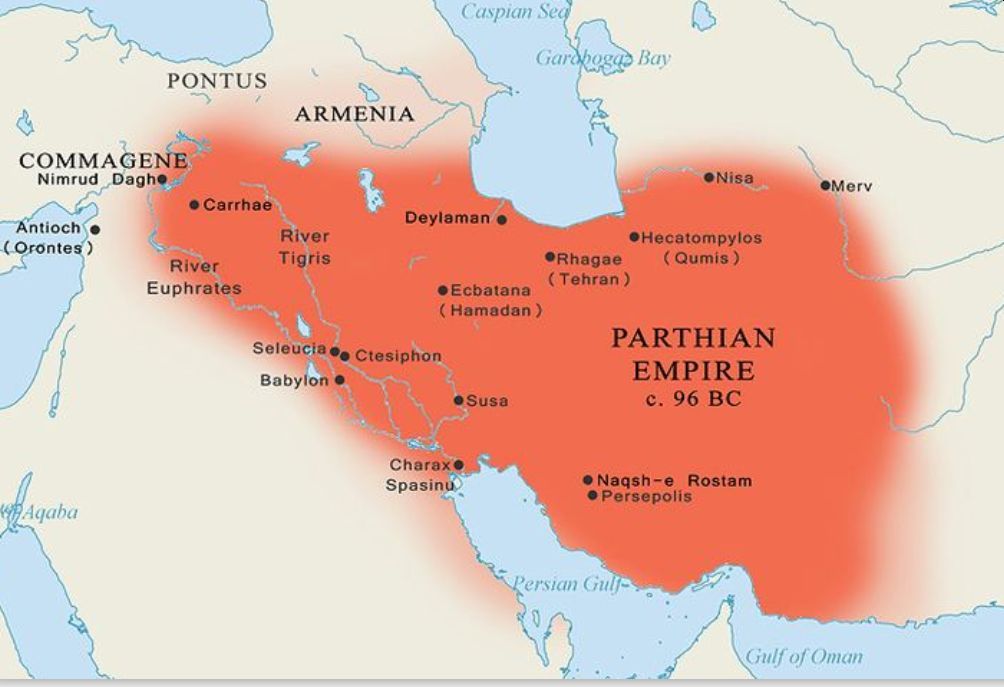
Marcus Titius would
have sent trusted Syrian servants to the Parthian capital Ctesiphon to convey
messages and arrange for the safe conduct of the royal family. Marcus probably
granted some of these servants Roman citizenship, and
as freedmen, they could have used their knowledge and political connections to
create successful commercial businesses. They had high-status contacts in
Ctesiphon who could acquire silk batches for dispatch to the cities of Roman Syria.
Maes Titianus was probably from one of these merchant families, a Roman citizen
with connections to the Parthian nobility, which ensured that his business
requests would be granted. In this particular context,
he was able to arrange for some of his commercial agents to join a Parthian
caravan as it headed out across Iran towards Bactria and the Kushan
Empire.
Claudius Ptolemy
explains the route taken by the Maes group. The first stage in the expedition
was a journey across the Parthian Empire from the Euphrates frontier to Merv on
the eastern edge of Iran. Before the onset of summer, Parthian caravans would
have left the hot and humid city of Ctesiphon and headed east to the seasonal
capital of Ecbatana in the drier and cooler climate of Media.¹³
This was a journey of about 250 miles through passes in the Zagros
Mountains which formed the outer fringe of the Iranian Plateau. Caravans
followed this route in springtime when snows from the
mountains melted and provided temporary streams of water for the benefit of
travelers and their horse-mounted escorts.
The multi-walled city
of Ecbatana offered accommodation and supplies to the Parthian caravans that
crossed ancient Iran. From Ecbatana, the route headed north across the Iranian
plateau towards the coast of the Caspian Sea. This was a journey of about 200
miles through mountain valleys that descended towards the narrow seaboard of Hyrcania. Hyrcania was
a 300-mile-long belt of low-lying territory between the mountains and the
Caspian shore. This plain of fertile land was a vital corridor for
east-west travel as it offered caravans a well-provisioned route around the
eastern section of the Iranian Plateau. On the edge of Hyrcania,
the merchant caravans passed through the Iranian city of Hecatompylos. This was the first capital created by the
Parthians (the Parni) when they migrated from the Central Asian steppe to
settle in northeast Iran (238–209 BC).
The caravan route
from Hecatompylos (Qumis) to the Parthian
frontier at Merv covered more than 450 miles across arid
terrain. Merv was the last major outpost of the Parthian Empire, and
from there, caravans would have entered Kushan territory and headed 300 miles
east to the Bactrian capital Bactra (Balkh). Centuries earlier, Bactria had
been part of a Greek kingdom that included an urban population descended from
Macedonian colonists (256–140 BC). Perhaps the Maes group was able to
exploit a shared Macedonian heritage to pass unhindered through this
region.
In AD 100, there was
peace between Parthian Iran and the Kushan Empire, which ruled in ancient
Afghanistan. This meant that caravans were able to pass unobstructed between
their realms and the Parthian merchants that reached Bactra (Balkh) were
permitted to travel eastward to the Pamir Mountains. It was a journey of about
00 miles between Bactra and a trade outpost on the Kushan frontier known as the
Stone Tower (Tashkurgan). The Stone Tower was a
meeting-ground for the steppe peoples that Claudius
Ptolemy calls the ‘Scythians.’ Ptolemy calculated that the entire route from
Ctesiphon to the Stone Tower covered about 26,280 stadia, which is equivalent
to about 2,600 miles.¹⁴ Caravans can travel up to 15
miles per day, but with frequent rest periods, the journey would have taken up
to six months.
The Stone Tower trade
outpost in the Pamir Mountains was about 250 miles from the oasis city of Kashgar on the edge of the Tarim Basin. Perhaps the
Roman merchants sent by Maes expected to conclude their trade dealings at this
distant site and then begin the long trek home to Syria. But in AD 100, Kashgar was a protectorate of the Han Empire, and
Chinese observers were active on this new frontier. The Protector General Ban
Chao was planning his retirement and wanted to impress the Han Emperor by
returning to Luoyang with a range of foreign peoples
from western countries beyond the Tarim territories. By chance, the Roman
merchants were at the Stone Tower when Han agents were searching for external
representatives who could give an account of their distant homelands to the
imperial court. As a result, the Maes group was brought to the offices of Ban
Chao in the Tarim kingdoms where they accepted the opportunity to travel onward
to Luoyang.¹⁵
The Maes merchants
spoke Greek and were found by Chinese agents near a country that had once been
ruled by Hellenic dynasties (Bactria). They were also traveling with Parthian
merchants and so did not identify themselves as Roman. This meant that Chinese
authorities were not aware they were dealing with subjects of Da Qin (the Roman
Empire). The Maes merchants were conveyed 600 miles across the Tarim kingdoms
by a Chinese military escort and brought through the Jade Gate to the
600-mile-long Hexi a corridor that led into inner China and the 400-mile route
to Luoyang.15
This part of the
journey revealed the accurate scale of eastern Asia to Roman geographers.
Ptolemy reports, ‘The distance from the Stone Tower
to Sera, the capital of the Seres, is a journey of seven months, estimated at
36,200 stadia.’¹⁶ This distance was about 3,600 miles and suggested
that a journey from the Euphrates to central China could be completed in about
twelve months, or a full year of travel. Consequently, anyone making the round
trip would be absent from their homeland for at least two years.
Maes wrote a full
account of the journey taken by his business agents, but only the briefest
summary of this work survives in the map-based discussion given by Claudius
Ptolemy. Ptolemy describes how the Maes group journeyed for seven months
through lands that were previously unknown to any Greek or Roman authority. As
they traveled through the Tarim territories, the agents kept to
a route ‘subject to violent storms’ until, at the end of their journey, they
entered the capital of the Seres. This was the imperial city of Luoyang, and
the Maes group found themselves in the company of dozens of envoys from Central
Asia who had come to pay honor to the Chinese Court.¹⁷
The Chinese history,
known as the Hou Hanshu, reveals the incident from the Han perspective and
dates this encounter to AD 100. It seems that the Maes group
described themselves as Macedonians and explained the long distance between
their Syrian homelands and the Chinese Empire. This information translated for
the imperial court, and the Chinese scribes entered in their records that the
Maes group came from a previously unknown region called Meng-chi Tou-le
(Macedonia–Tyre). The Hou Hanshu reports: ‘the distant
States of Mengchi and Tou-le came to make
their submission by sending envoys to bring tribute.’¹⁸ The Chinese were
informed that the route from Meng-chi Tou-le to the Han capital at Luoyang
covered a distance of more than 10,000 miles (40,000
li). This made these western territories the most distant region in contact
with the Chinese regime and placed Meng-chi Toule within
the Roman Empire.

The Maes merchants
followed the protocol practiced by foreign envoys and were permitted into the
imperial palace to offer formal submission to Emperor He.
The group was
carrying lightweight silks that had been rewoven in Syrian workshops and had
some imperial gold coins that bore the image of the Roman Emperor. The Hou
Hanshu reports that the representatives from Mengchi Tou-le ‘brought
silks and the gold seal of their ruler’.¹⁹ There were
dozens of visiting envoys offering tribute at this time, and the Maes group was
accepted as just another party of exotic foreigners from a minor power on the
western edge of Asia. They would have received the finest Han silks as
diplomatic gifts before being escorted back to the Stone Tower to begin their
long return journey to Syria.
The report written by
Maes described a journey to the Far East that challenged the traditional view
of Central Asia as a place occupied by monsters and cannibals.
The expedition
confirmed the existence of robust and well-organized kingdoms on the eastern
edge of Asia. This new awareness of China could explain a comment made by
Juvenal when he complains that Roman women were interfering in traditional male
interests by interrupting generals with the question, ‘what are the intentions
of the Chinese?’²⁰
The Maes report
suggested unique opportunities for the development of distant commerce and the
advancement of Roman knowledge. For the first time, Roman subjects in Syria and
Egypt knew for sure that there was an Asian superpower in the Far East that manufactured
large quantities of silk and steel. Reports of the Maes expedition spread
through Roman Syria at a time when Roman Emperor Trajan was engaged in
conquering Dacia (AD 101–106). Perhaps knowledge of these distant contacts and
the value of eastern commerce encouraged the Emperor
to plan the conquest of Parthia.
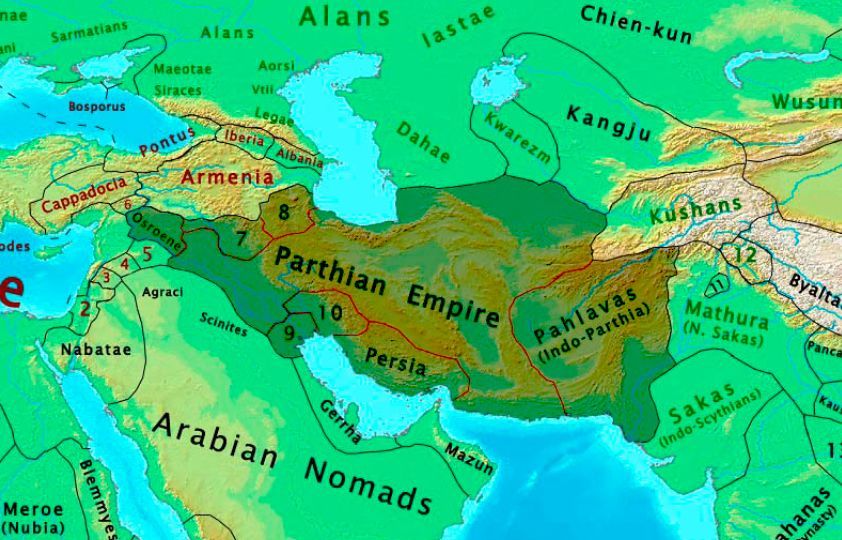
The Antun Embassy
Chinese sources
record that in AD 166, a Roman ship sailed around the Malay Peninsula and
crossed the Gulf of Thailand to reach the South China Sea.
The Roman crew then
sailed north along the coast of Vietnam and docked at a Chinese military
outpost called Rinan. The Rinan Commandery (in what is now central Vietnam) was
on the southern periphery of the Han Empire, where the Red River flowed into
the Gulf of Tonkin. Its Han commander allowed the Roman crew to come ashore and
made arrangements for some of their personnel to be
escorted to the Chinese court at Luoyang.
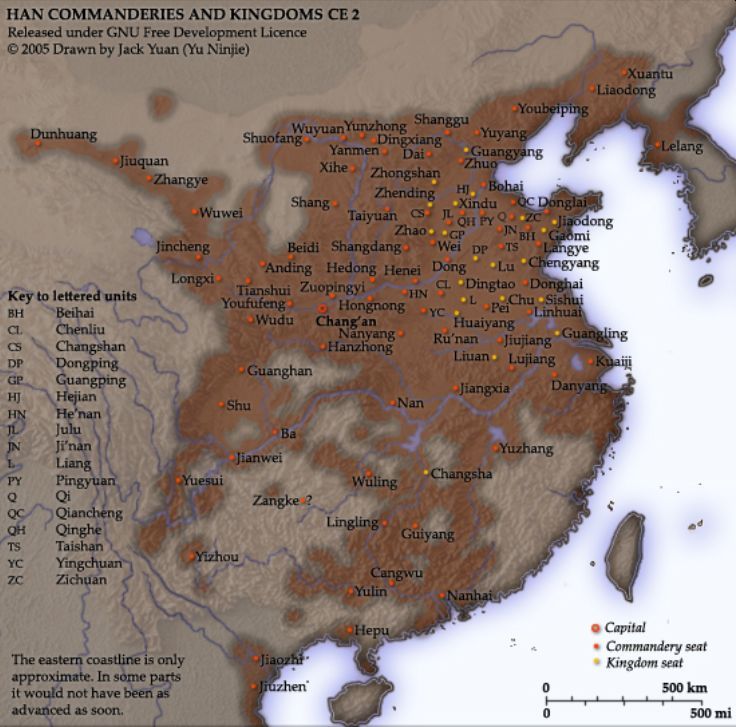
This contact between
China and Rome appears in a brief encyclopedia-like entry in the Hou Hanshu in
the section marked ‘Da Qin’.²¹ The author was
interested in descriptive facts and did not think it was relevant to explain
the purpose of this contact. Unfortunately, this brief account is all that
survives regarding this first meeting between the Han court and representatives
from Rome. This event was a prime opportunity for the exchange of significant
commercial, cultural, and technological innovations between the two ancient
civilizations. But the contact had no long-term impact, and Chinese accounts
provide the only record of these Roman representatives reaching Han China. This
suggests that the Roman crew may not have made it safely back to Egypt on a sea
voyage that would have spanned a quarter of the globe and crossed 8,000 miles
of ocean.²²
The arrival of Roman
subjects in China was probably connected with events in AD 162 when the
Parthian King Vologases IV invaded the Roman client kingdom of Armenia and
installed his candidate on the throne. In response, the Roman governor of
neighboring Cappadocia, Marcus Sedatius Severianus,
marched his legion into Armenia to restore imperial order. But the Roman army
was outflanked, encircled, and massacred by a large force of Parthian horse
riders. This meant that Emperor Marcus Aurelius was forced to declare a state
of war between their regimes. After almost fifty years of peace on the eastern
frontiers, the Roman and Parthian Empires prepared for full-scale military conflict.²³
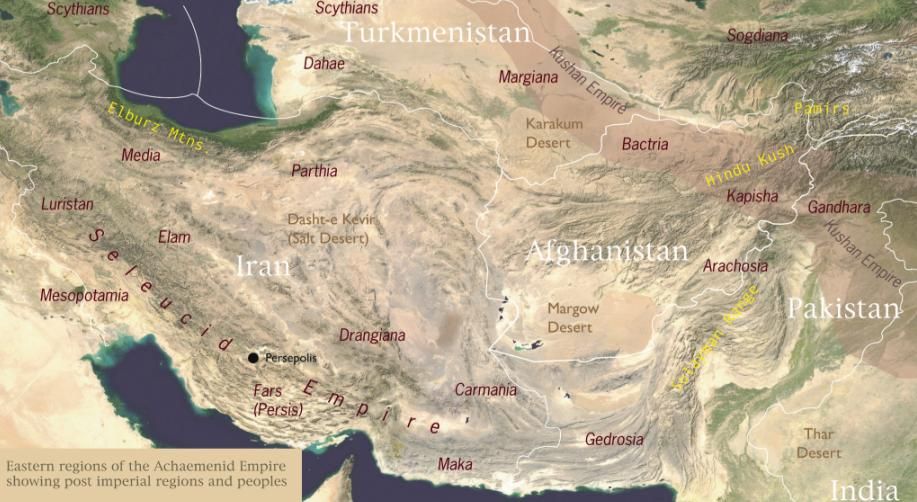
As the situation
escalated, the Romans probably decided to threaten Parthian interests by making
direct contact with robust regimes in the distant east. This would have
included the Kushan Empire in Afghanistan and the Caspian kingdom of Hyrcania, which had split from the main Parthian realm. The
usual route chosen for this type of diplomatic contact was through Egypt and
its Red Sea connection with India. Roman business people
were probably given state messages to deliver to foreign rulers, and envoys
from distant kingdoms were offered safe passage on Roman trade vessels are
sailing to and from the Indus region.
These contacts had
proved valuable in the reign of Nero when the Roman legions fought
Parthian-backed forces for control of Armenia (AD 58–63). Roman successes in
this war were aided by eastern conflicts that drew the Parthian military
workforce away from the Armenian campaign. Tacitus reports, ‘Our
successes were more easily gained because the Parthians were fully occupied
with the Hyrcanian War. The Hyrcanians sent
messages to the Roman Emperor asking for an alliance, and as a pledge of
goodwill, they explained how they had detained the Parthian King in the east.’
For their return journey, these envoys were given quarters on the Roman ships
that sailed from Egypt to the Indus kingdoms. Tacitus explains how the Roman
commander Corbulo ‘was concerned that the
deputies would be intercepted at the enemy’s outposts when they crossed the
Euphrates. So he escorted them and conducted them down
to the shores of the Red Sea, and they returned safely to their native lands by
avoiding Parthian territory.’²⁴ These envoys would have traveled through the
Kushan Empire from the Indus kingdoms to the northern frontiers of Afghanistan
and from there to Hyrcania on the eastern
shores of the Caspian Sea.
The Romans probably
used this same merchant network in AD 163 to contact distant regimes opposed to
the Parthian rule. But this time, it seems that the Emperor
decided to contact the Seres (Chinese) and send Roman representatives to the
Far East. Perhaps Marcus Aurelius wanted to establish contact with the
mysterious steel-equipped empire described by Maes Titianus.
In the spring of AD 163,
the co-emperor Lucius Verus arrived in Syria to prepare the Roman legions for
war against Parthia. Around the same time, arrangements were made for a Roman
delegation to sail from a Red Sea port in Egypt to contact the Seres. Their
first point of contact was the Kushan Empire, which had dealings with China via
the overland Silk Routes. But by this period, the Tarim kingdoms were no longer
subject to the Han rule, and the Kushan could not guarantee safe passage
through Central Asia.
An alternative route
to China was to cross the entire Indian Ocean and sail around the Malay
Peninsula to reach the Gulf of Thailand and the South China Sea.
Indian merchants had
recently discovered this route when they explored the north coast of Vietnam.
Han accounts record that in AD 160 a regent from one of the Indus kingdoms
managed to send envoys to southern China using this new maritime route.²⁵ The discovery of this sea passage offered an
important new avenue for long-range diplomatic and commercial contacts. The
Roman envoys, who were probably senior merchants, were sent east by Marcus
Aurelius to confirm the existence of this route and establish a direct
connection with the Han government.
The Romans spent the
winter of AD 165 in an eastern port before resuming their voyage at the onset
of the summer monsoon winds in AD 166. From Burma, they sailed 1,000 miles down
the Malay Peninsula and through the treacherous Malacca Strait to enter the
Gulf of Thailand. From Thailand, it was 500 miles to the southern tip of
Vietnam and then a further 1,000 miles around the southeast coast of Asia to
reach Rinan on the south edge of the Han Empire. Rinan was a Chinese military
outpost established close to where the Red River flowed into the Tonkin Gulf
(near modern Hanoi). The Roman crew probably arrived at Rinan in the late
summer of AD 166, after spending over fourteen months at sea or in various
foreign ports.
Rinan was managed by
a Han administrator who oversaw Chinese interests in the region and had
authority over the local rulers. In AD 166, the Han government had just
restored order in the Rinan Commandery following a short series of military mutinies.²⁶ Consequently, the Romans who arrived at the port
would have seen numerous military personnel dressed in strange uniforms and
carrying unfamiliar weaponry. The travelers must have realized that they were
dealing with a vast militarized empire similar to
Rome.
The Chinese commander
at Rinan recognized the significance of the Roman visitors, and they were
immediately dispatched under guard to Luoyang, along with cargo samples removed
from the ship. The journey from Rinan to Luoyang was more than 1,200 miles, which
is almost the same distance as from Egypt to Italy.
Travel across China
was conducted mainly through a network of wide roads, and the Roman group would
have been conveyed in official carriages accompanied by a small escort of
Chinese cavalry. The leading Chinese highways were over 50 feet wide, which
made them twice the size of the most important Roman roads. A paved lane in the
center of these highways was reserved for state carriages and dispatch
riders.
Postal offices were
situated on the main routes, and these managed the conveyance of messages and
kept records of dispatches. Every 6 miles, there were Cantonal offices staffed
by soldiers who policed the area and monitored traffic. At 10 mile intervals,
postal stations provided couriers and state officials with fresh horses and
offered facilities for overnight accommodation.²⁷ But
even with these advantages, the journey north to the inland capital
of Luoyang must have taken several weeks of fast-paced and relentless
travel.
On their way north,
the Romans would have seen the tall watchtowers in the Chinese countryside,
which served as multi-story grain silos. They also had an opportunity to
observe the formidable defensive walls that surrounded Han cities. These cities
had none of the monumental stone-built classical buildings that a Greek or
Roman might expect to see in an important urban center. Instead, the upper
stories of the most significant Chinese buildings were constructed entirely
from ornately carved wood supporting bright terracotta tiles.
Roman travelers would
have noticed other cultural differences. In China, thick silk fabrics were worn
by poor people of low status, including orphans and widows who were offered
essential clothing as handouts by the state. High-quality steel was a rarity in
the Roman Empire, but in China, it was used both for battle gear and standard
work tools. In Roman domains, the image of the Emperor
was widely produced on coins, army emblems, and public statues. But the Chinese
did not display reverence in the same manner. During their weeks of travel
through China, the Roman envoys might have wondered if the Han Emperor would be
a soldier-general like Trajan, or perhaps a philosopher statesman like Marcus
Aurelius.
When the Romans
reached Luoyang, they were probably taken to an administrative headquarters
within the imperial palace for assessment. A vast civil service managed China,
and the Han palace complex in Luoyang resembled a self-contained city filled
with scholars, archivists, ministers, and bureaucrats. Han officials might have
summoned translators from the Indian merchant community resident at Luoyang, or
perhaps asked assistance from one of the Buddhist temples that had been
established within the city. There were also members of the Parthian nobility
living in Luoyang who were associated with Silk Route commerce and the
propagation of Buddhism.²⁸ The sight of Han officials
in the company of these Parthian nobles would have been highly disconcerting
for the Roman envoys.
After careful
questioning, the Roman delegates were granted an audience with the Han Emperor
and summoned to the inner court. As part of this protocol, the Han officials
subjected the Romans to a list of stock questions designed to ascertain the
scale and character of their regime. According to Chinese records, the
delegates claimed to represent ‘Antun,’ which is a reference to the ruling
Roman household and the Emperor Marcus Aurelius Antoninus. The Chinese
recognized that Rome had a ruling political family similar to
the Han dynasty and shortened the dynastic name Antonine to ‘Antun.’
The Antonine
delegates confirmed that there was a direct overland route to the Roman Empire
that passed through Parthian territory. They told the Chinese that the Roman
regime had been trying to send representatives to China, but their efforts had
been blocked by the Parthians who wanted to maintain control of the overland
silk trade. Further questions concerned the profits that Roman merchants made
from their trade ventures to India. The Chinese probably asked the envoys about
the military strength of the Roman Empire, as this is an essential feature in
most Han reports concerning foreign powers. However, the envoys did not reveal
Roman military numbers or explain their methods of warfare. Maybe they thought
it was unwise to disclose this information to a foreign power, or perhaps the
presence of Parthians in the Han court inhibited their response.
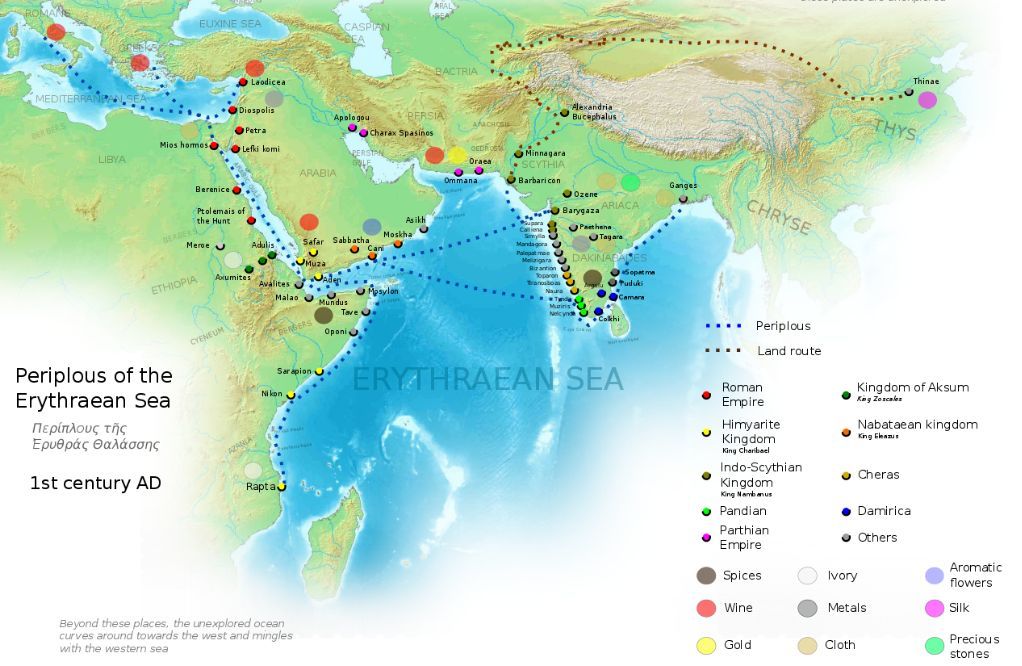
It was customary for
embassies to offer exotic and expensive diplomatic gifts to foreign rulers as
tokens of respect and measures of prestige. Even trade delegations followed
this practice in order to begin successful commercial
negotiations with foreign governments. However, it seems that the Antonine
group had no valuable ambassadorial gifts to present to the Han court and no
high-value Roman merchandise to hand over as diplomatic offerings. This cannot
have been an oversight, so the Romans may have lost their prepared gifts during
some previous encounters. Perhaps they were compelled to part with these items
by some foreign ruler at one of the eastern kingdoms they had visited on route
to China. This could have been the price they paid for a safe-harbor
during the preceding winter.
In place of Roman
gifts, they offered the Han Emperor the cargo samples
that had been removed from their ship and conveyed to the palace at Luoyang.
These items were a collection of ordinary eastern merchandise that disappointed
the Han officials. Based on existing reports from the silk routes, the Han were
expecting to receive gemstone jewelry, objects fashioned from delicate red
coral, or exquisite western fabrics dyed vibrant colors. The Hou Hanshu records: ‘Antun the ruler of Da Qin, sent envoys from beyond
the frontiers to reach us through Rinan. They offered us elephant tusks, rhinoceros horns, and turtle shells. This was the very first
time there was ever communication [between our countries.
The Antonine envoys
offered no explanation for their lack of appropriate diplomatic gifts and this caused concern in the Han court. All previous
reports collected by the Han government suggested that Rome was as powerful as
the Chinese Empire, so the absence of suitable diplomatic offerings was
suspicious. This was viewed as a possible lack of commitment by the Romans or a
sign that their empire was not as wealthy as existing reports claimed. The Hou
Hanshu comments, ‘The tribute they brought was neither precious nor rare,
raising suspicion that the accounts of Rome might be exaggerated.’²⁹
In 1885 a German
scholar named Friedrich Hirth translated this passage and assumed that the
Chinese were ‘suspicious’ about the delegates. He suggested that the envoys
were opportunist Roman merchants who offered trade cargo as diplomatic tribute.³⁰ But the Han court had protocols for assessing
foreign groups and the passage in the Hou Hanshu suggests the diplomats were on
a genuine mission from the Emperor. An accurate reading of the ancient text
indicates that the meager gifts made certain Chinese officials doubt
established reports describing the wealth and significance of Rome. This
exchange of gifts concluded the meeting, and the Antonine envoys were escorted
back to Rinan and their waiting ship.
The Antonine
delegates probably expected to spend the summer of AD 168 in India with their
return to Roman Egypt scheduled for November of that year. Given these
schedules, the Chinese anticipated further contacts from the Romans in
AD 170. But no one returned, not even opportunistic merchants
exploiting lucrative new opportunities. Chinese officials sought explanations
for the lack of contact by Rome and drew attention to the condition of the
gifts offered by the Antonine group. They accepted that the diplomats were genuine, but concluded that Rome was not as wealthy or as
politically ambitious as their foreign informants had claimed.
However, if the
Antonine delegates had returned safely to Egypt, they would have found the
Roman Empire amid an unprecedented crisis. In AD 165 the Roman legions
successfully invaded the Parthian Empire, captured the city of Seleucia,
and occupied Babylonia. But an unknown disease broke out amongst the troops
during the winter months, and this lethal sickness soon reached high levels of
infection. The Roman army was forced to abandon the war and retreat to Syria,
with many men still infected by the outbreak. Dio reports that the co-emperor
Lucius Verus ‘lost a great many of his soldiers through supply shortages and
disease, but he made it back to Syria with the survivors’.³¹
The returning troops
spread the disease into the main cities of the Roman Empire. The Historia
Augusta claims that ‘it was his fate that disease seemed to follow Verus
through whatever provinces he traveled on his return until finally, it reached
Rome.’³² This disease, known to academics as the ‘Antonine Plague,’ quickly reached epidemic levels in many
parts of the Empire. Major outbreaks kept reoccurring in previously affected
regions, causing further distress and death to the Roman population. In AD 168,
the imperial physician Galen had to treat an epidemic amongst the Roman army in
northeast Italy. He reports, ‘When I reached Aquileia, the infection was at a
greater intensity than previous outbreaks. The Emperors immediately went back
to Rome with a few soldiers, while the majority had difficulty surviving and
most perished.’³³ In AD 169, the co-emperor Lucius Verus died suddenly due to
an undisclosed illness that might have been the disease, or a sickness caused
by the toxic effects of preventative medicines.³⁴
Galen documented the
symptoms and effects of the disease, which seems to have been a virulent new
form of smallpox. The infection caused many deaths since the Roman population
had no inherited resistance to this lethal strain. Possible death rates are suggested
by papyrus documents recovered from Roman Egypt. Tax records for Socnopaiou
Nesos confirm that between September AD 178 and
February 179, a village with 244 male inhabitants lost seventy-eight men due to
the disease. This is almost one-third of the male population in six months.³⁵ A bronze plaque from Virunum,
near the Noricum iron mine, gives a membership list for a local temple devoted
to Mithras. In AD 183, the Mithraeum lost five of its ninety-eight members
during a fresh outbreak of the disease.³⁶ Modern
strains of the smallpox virus can leave survivors visually impaired or infertile, so
many who recovered from the infection were left with severe disabilities that
made them dependent on others, or vulnerable to further illness.
As the legions
succumbed to disease, the Roman defenses on the northern frontiers were overrun
by Germanic invaders. Marcus Aurelius spent the remainder of his reign
campaigning to restore the Roman Empire and safeguard its European frontiers.
Unknown to the Romans, the same disease was spreading through the Far East and
inflicting a similar death rate on the Chinese Empire. The Hou Hanshu records
that in AD 162 one third of the Han army stationed on the northern frontiers
died or were debilitated during the early stages of this pandemic.³⁷
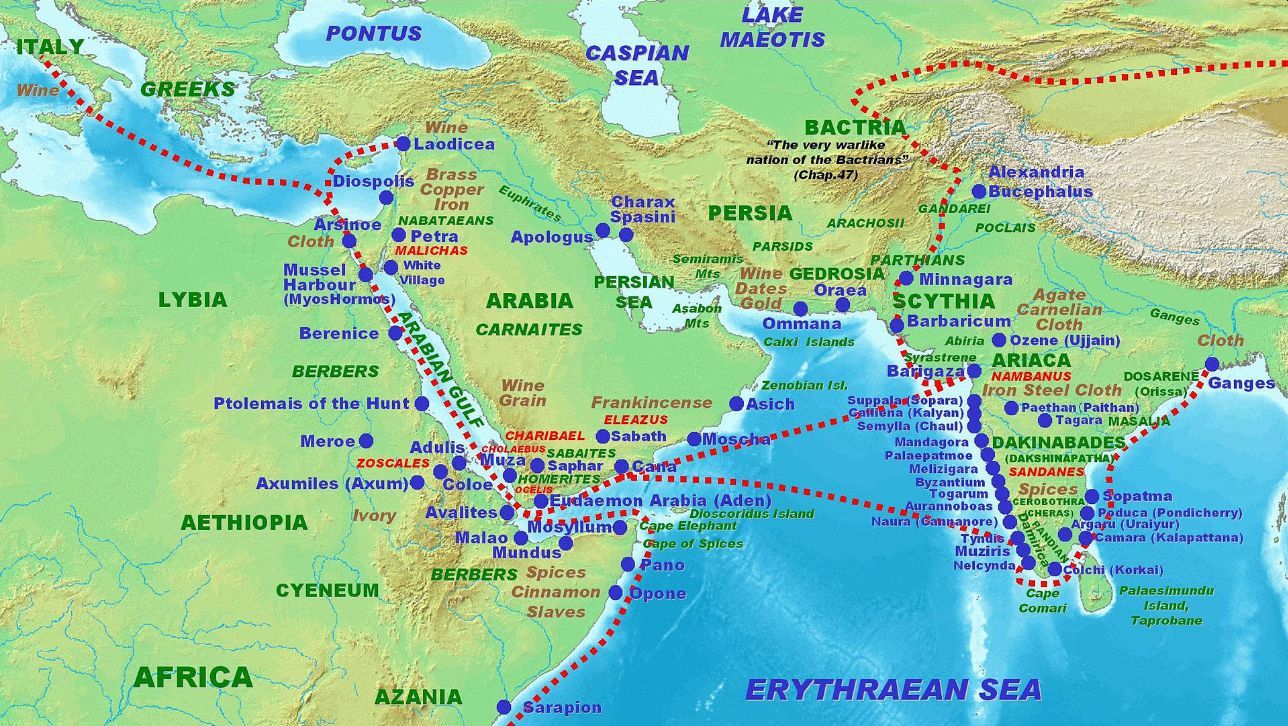
International trade
declined, and long-distance communications were no longer feasible as both
empires suffered severe damage to their manpower. Hopes of an alliance between
distant empires were no longer achievable as the governments of China and Rome
fought for individual survival in a world were devastating disease reduced
settled populations and crippled entire armies.
Roman contact with
Southern China In AD 184 the Chinese Empire was
destabilized by a major political uprising known as the Yellow TurbanTaiping dao
(or Way of Great Peace) rebellion also translated as the Yellow
Scarves Rebellion. The rebels mobilized Chinese peasants and rural militia who
wore yellow fabric around their heads to identify their allegiance to a
revolutionary Taoist sect that practiced faith-healing. To restore order the
Han regime gave greater political, military and tax-collecting powers to
provincial governors, local rulers, and Chinese generals. These new warlords
suppressed the yellow scarves' rebellion and then fought to claim power for
themselves (AD 196–208).
China was split into
three rival kingdoms with a warlord named Cao Cao ruling
the northern half of the country (the Kingdom of Wei). South of the Yangtze
River the lower provinces of China were divided between the Kingdom of Shu in
the west and the Kingdom of Wu in the east. The Han dynasty officially ended
in AD 220 when the weak and
ineffective emperor Xian was forced to abdicate by the son of Cao Cao.
During this era, the
Roman Empire also suffered a period of serious political and economic instability
as the population declined and imperial revenues diminished.
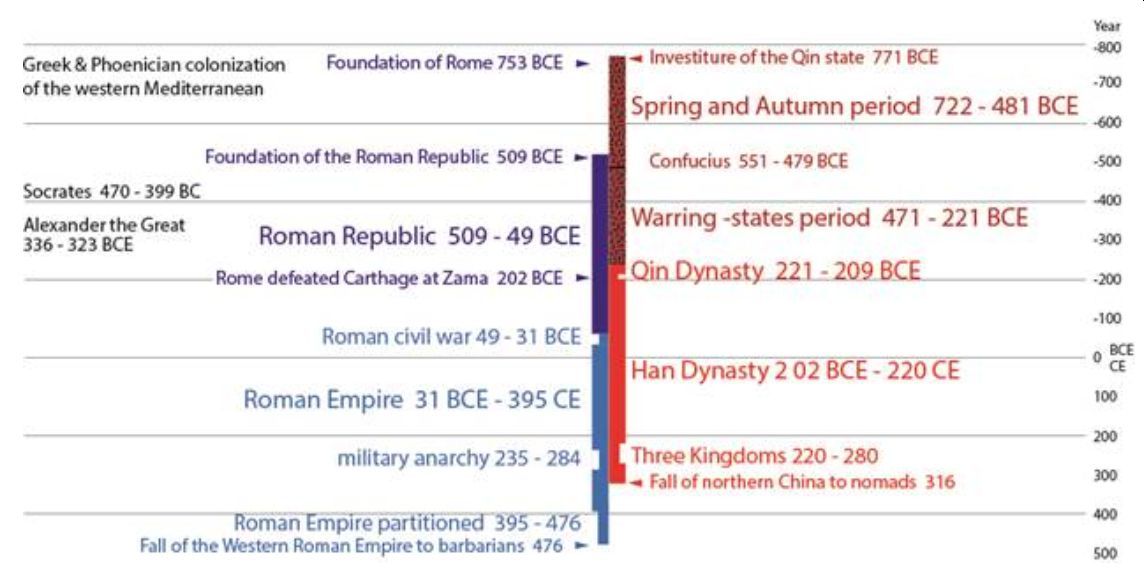
This crisis included
a civil war that threatened to split the Roman Empire into three rival domains
(AD 192–197). Clodius Albinus seized power in Gaul, Pescennius Niger
claimed Syria, while Septimius Severus gained Pannonia and Italy. When Severus
successfully defeated his rivals he founded a new
imperial dynasty that stabilised the Roman
Empire for several decades (AD 198–235).
A Chinese text called
the Liang-shu 梁書 records
how a Roman merchant named Lun reached southern China in AD 226. Lun could be
the Greek name Leon phonically simplified by Chinese scholars.³⁸
Lun, or Leon, arrived aboard a Roman ship that sailed from Thailand around
Vietnam to reach the Chinese Kingdom of Wu. On arrival, he was questioned by
the Chinese Prefect of Tonkin (northern Vietnam) and identified himself as a
merchant specializing in long-distance trade. The Prefect of Tonkin sent Leon
to Wuchang (modern Ezhou) which was the inland capital of the Wu Kingdom and
the court of the regional Emperor Sun Quan.³⁹
By AD 226 the Kingdom
of Wu had reached a political and military stalemate with the powerful Kingdom
of Wei in northern China. But Sun Quan wanted to expand his domains and was
interested in extending his rule south into Cambodia and Vietnam. He had maritime
interests in the East China Sea and was preparing an armada with 10,000 troops
to invade the nearby island of Taiwan (AD 230).⁴⁰
Sun Qian may have
been surprised to learn that the Roman Empire was still intact and functioning
as a unified state at a time when China had split into three rival kingdoms.
The Liang-shu reports that Sun Quan ‘asked Lun
for details about his native land and its customs, and Lun prepared a report in
reply.’ The prospect of establishing political and commercial contacts with
Rome must have been intriguing. The Liang-shu records
that Sun Quan selected a Chinese officer named Liu Hsien to accompany Leon on
his return journey to the Roman Empire.
While he was present
at the Wu court, Leon expressed interest in some tiny dark-skinned captives
that had been seized by Chinese forces in Southeast Asia. Leon remarked that
these people were rare and valuable in Rome, so Sun Quan gave twenty of the
captives to him as a gift, possibly hoping to ensure the return of further
Roman merchants to the WuKingdom. Leon left
China around AD 227, but there is no record that his ship ever made
it safely back to the Roman Empire. The vessel may have been wrecked by storms,
attacked by pirates in the Gulf of Thailand, or perhaps succumbed to the
paralyzing calms in the Straits of Malacca. The Liang-shu recorded
that ‘Lun returned directly to his native land, but Liu Hsien must have
died on the way.’⁴¹ The contemporary Roman sources
make no mention of this contact or the arrival of any distant foreigners at the
court of Severus Alexander (AD 222–235). Once again, an opportunity to
establish direct political and commercial contacts had been lost.
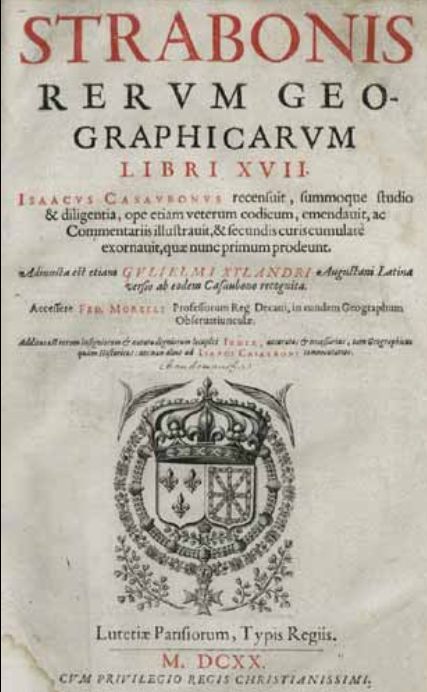
1. The Geography
of Strabo. Cambridge, Mass.: Harvard University Press; London: William
Heinemann, Ltd. 1924, 17.1.45.
2. The Periplus of
Hanno a voyage of discovery down the west African coast. Translated by Schoff,
H. 1912, 64.
3. Epistulae (Pliny), the letters of Pliny the Younger,
6.26.
4. Ptolemy,
Geography, 1.14.
5. Ibid., 7.3; 7.5;
7.7; 8.1; Berggren and Jones, Ptolemy’s Geography (2000), 22.
6. Hou Hanshu, Book
of Later Han《後漢書》88.10.
7. Procopius of
Caesarea (Greek: Προκόπιος ὁ Καισαρεύς Prokópios ho Kaisareús; Latin:
Procopius Caesariensis; c. 500 – c. after 565), Secret History, 25.
8. Ptolemy,
Geography, 1.
9. Ibid., 1.11.
10. Cary, "Maes,
Qui et Titianus" The Classical Quarterly, New Series, 6.3/4 (July–October 1956)(1956).
11. Velleius Paterculus,
2.94; Suetonius, Octavian, 21; Orosius, 6.21.
12. Strabo, 16.1.28.
13. Strabo, 11.33.1.
14. Ptolemy,
Geography, 1.11.
15. Hou Hanshu, 4.14
(November, AD 100).
16. Ptolemy,
Geography, 1.11.
17. Leslie and
Gardiner, The Roman Empire in Chinese Sources (1996), 148.
18. Hou Hanshu, 4.14;
88.1.
19. Ibid., 4.14.
20. Juvenal, DECIMVS
IVNIVS IVVENALIS 6.400–3.
21. Hou Hanshu,
88.12.
22. Equator: 24,901
miles.
23. Rose Sheldon, Rome’s
Wars in Parthia (2010), 155–7.
24. Tacitus, Annals,
14.25.
25. Hou Hanshu,
88.15.
26. Leslie and
Gardiner, The Roman Empire in Chinese Sources (1996), 137; 153.
27. Joseph Needham,
Science and Civilisation in China, Volume 4
(1971), 3–38.
28. Buddhist Parthian
prince An Shigao: biographies in Chu Sanzang Jiji and Gaoseng Zhuan.
29. Hou Hanshu,
88.12.
30. Friedrich Hirth,
China and the Roman Orient (1885), 173–8.
31. Dio, 71.2.
32. Historia Augusta,
Lucius Verus, 8.1–4.
33. Claudii Galeni Opera
Omnia, 19.17–18.
34. Historia Augusta,
Lucius Verus, 11.
35. F. Preisigke, Sammelbuch Griechischer Urkunden aus Aegypten
(Scrapbook Greek documents from Egypt), 16.12816.
36. C.I.L. 3.5567.
37. Hou Hanshu,
65/55.2133 (4a–b).
38. Leslie and
Gardiner, The Roman Empire in Chinese Sources (1996), 100–1.
39. Yao Silian (姚思廉) Book of
Liang (Liáng Shū), 48.
40. Li, China at War
(2012), 454–5.
41. Yao Silian, Liang-shu, 48.
For updates click homepage here